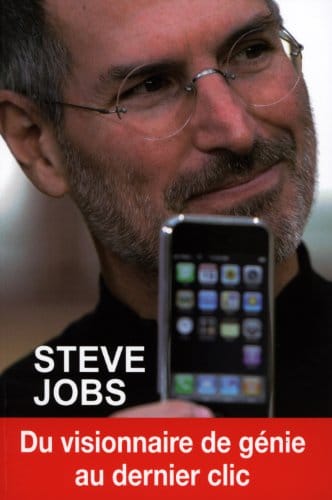Aha! Insight: From Sudden Spark to Sustainable Innovation
Discover the science and strategy behind Aha! insight, and learn practical techniques to trigger game-changing breakthroughs for you and your team.

Introduction: What Makes an "Aha!" Moment Special?
You have likely experienced it: a sudden flash of clarity, a feeling of pieces snapping together, and a solution blooming fully-formed in your mind. Psychologists call this phenomenon "Aha! insight," and it can transform how we solve problems, develop products, and lead teams. Unlike step-by-step reasoning, insight feels instantaneous and emotionally charged, making it a prized but mysterious asset in business and personal life alike.
Defining Aha! Insight
Aha! insight is the rapid restructuring of information that leads to a novel, useful understanding. It is not merely a lucky guess; it is a cognitive leap that re-frames the problem space. Classic examples include Archimedes shouting "Eureka!" in his bath or Newton recognizing gravity after observing a falling apple. Today, these sparks drive patentable inventions, breakthrough marketing campaigns, and personal epiphanies.
The Neuroscience Behind the Spark
Functional MRI and EEG studies reveal that insight involves a burst of gamma-band activity in the right temporal lobe, preceded by a brief suppression of visual input called an "alpha wave blink." In simpler terms, the brain quiets external distractions, rearranges stored information, and then ignites in a cross-lobe fireworks display. This neurological choreography explains why insights often arrive in the shower, on a walk, or during meditation—moments when the prefrontal cortex eases its tight grip and allows subconscious processing.
Common Triggers of Aha! Moments
1. Incubation: Setting a problem aside allows your unconscious mind to reassemble fragments in novel ways. When you return, the answer may feel sudden even though it was brewing all along.
2. Constraint Relaxation: Many stalemates occur because we unknowingly impose rules that do not exist. Identifying and breaking these false constraints—such as realizing lines can extend outside a square in the nine-dot puzzle—often triggers insight.
3. Remote Association: Insights flourish when disparate ideas collide. Reading outside your field, traveling, or cross-training teams encourages the mental serendipity that drives remote associations.
4. Positive Mood: Research shows that happiness broadens attention, making the brain more receptive to weak connections that lead to novel ideas. Simple tactics like playing upbeat music can raise the odds of an Aha! experience.
How to Cultivate Insight in Daily Life
Create Cognitive Space
Schedule "white space" in your calendar. Short walks, mindfulness breaks, or even daydreaming sessions give the default-mode network a chance to wander and connect dots.
Alternate Focus and Diffuse Thinking
Use time-boxing techniques such as the Pomodoro Method. During focus sprints, absorb and analyze data; during breaks, disengage completely. The oscillation primes your brain for sudden synthesis.
Question Assumptions
Write down every rule you believe governs your problem, then ask, "What if the opposite were true?" This deliberate provocateur exercise forces constraint relaxation.
Leverage Diverse Inputs
Attend conferences outside your industry, host cross-functional brainstorming sessions, or keep a swipe file of intriguing ideas from unrelated domains. Diversity seeds remote association.
Capture the Moment
Insights are fleeting. Keep a waterproof notepad in the shower, enable voice notes on your phone during commutes, and encourage teams to jot ideas on communal boards.
Turning Aha! into Action
An insight is valuable only when translated into tangible outcomes. Use design-thinking frameworks—empathize, define, ideate, prototype, and test—to refine raw insights into user-centered solutions. Implement rapid experimentation to validate assumptions quickly, and establish feedback loops so each insight feeds the next iteration.
Case Study: Post-it Notes
3M scientist Spencer Silver accidentally created a low-tack adhesive, but its purpose remained unclear until colleague Art Fry experienced an Aha! moment while singing in a church choir. Fry needed a bookmark that would stick to—yet not damage—hymnal pages. Marrying Silver’s "failed" glue with Fry’s real-world need produced the Post-it Note, a product now sold in more than 100 countries. The story highlights incubation, remote association, and the critical step of acting on insight.
Fostering an Insight-Rich Culture
Psychological Safety: Google’s Project Aristotle found that teams feel safest to share half-baked ideas when they know they will not be ridiculed. Leaders should normalize failure and celebrate curiosity.
Ritualized Reflection: Agile retrospectives, after-action reviews, and weekly idea jams institutionalize the pause needed for incubation and synthesis.
Environmental Cues: Open whiteboards, casual seating, natural light, and playful artifacts signal that divergent thinking is welcome. Even virtual teams can use randomized video backdrops or digital doodle boards.
Measuring the Impact of Insight
While light-bulb moments are intangible, their effects are trackable. Metrics such as time-to-solution, percentage of revenue from new products, patent filings, and employee engagement scores indicate whether your environment nurtures insight. Pulse surveys can reveal whether people feel they have time to think and space to experiment.
Potential Pitfalls
Do not confuse flash with fact. Insights should be tested against data and user feedback. Confirmation bias can also masquerade as revelation; therefore, encourage devil’s advocates and pre-mortems. Finally, watch for idea hoarding—people sometimes guard insights for credit or fear of judgment. A transparent, collaborative culture mitigates this risk.
Conclusion: Making Room for Eureka
Aha! insight is not a mystical gift reserved for prodigies; it is a cognitive skill that individuals and organizations can intentionally cultivate. By engineering environments that alternate focus with freedom, encourage diverse input, and swiftly iterate on new ideas, you can transform sporadic sparks into a steady engine of innovation. The next breakthrough could be one shower thought—or one inclusive brainstorming session—away. Prepare your mind, and your team, to catch it.



